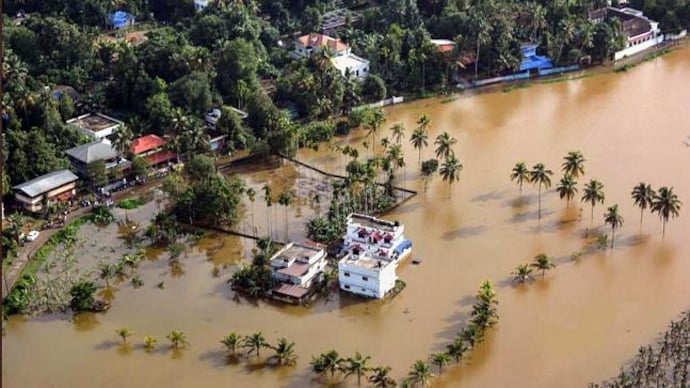Why Kerala floods killed so many, destroyed so much
Kerala floods have wreaked havoc in the state particularly after August 8, when the latest spell of monsoon fury hit the region. More than 220 people have lost their lives since then.

In Short
- Kerala has received 42 per cent more rainfall than average
- 10 per cent of Kerala is below sea level
- Water resource management in Kerala is one of the worst in India
More than 220 people lost their lives due to floods in Kerala during the latest spell of monsoon fury that began on August 8. Incessant rains, floods and landslides rendered more than 7.25 lakh people homeless. The aerial photographs show little distinction between backwaters and roads of Kerala.
Chief Minister Pinarayi Vijayan last week said that the floods caused a loss of properties over Rs 19,000 crore. The Centre has declared the Kerala floods as calamity of severe nature thus enhancing the central assistance to the state considerably. But why did Kerala floods killed so many and caused destruction on such a vast scale?
Kerala has a unique geography. It has a very large expanse of low lying areas. About 10 per cent of its geographical area is below the sea level. People have built their homes and business establishments in these regions, which are not suitable for such settlements.
In the first of its kind water resource management index by the Niti Aayog -- prepared in June this year -- showed that Kerala was the worst performer among the southern states and among the bad performers overall.
The Niti Aayog prepared the Composite Water Management Index (CWMI) for 2016-17 and classified states securing less than 50 marks as low performers. Kerala secured 42 and was ranked 12 among non-Himalayan states. Small streams, considered crucial for distributing surplus water, were not properly managed.
Monsoon was particularly heavy in Kerala this year registering a surplus rainfall of 42 per cent since June 1. According to the Indian Meteorological Department (IMD) data, Kerala received 2,346.6 mm rain till August 19 against normal of 1,649.5 mm. Idukki district received a surplus of 92 per cent during this period followed by Palakkad, 72 per cent above normal. These two are the worst affected by Kerala floods.
The latest spell of monsoon began on August 8 and ended on August 16 brought rain 170 per cent above normal. This was also the time when Kerala floods wreaked maximum havoc.
Environmentalist Madhav Gadgil blamed Kerala floods partially on man-made factors. Gadgil was the head of the Western Ghats Ecology Expert Panel (WGEEP) that submitted its report to the government in 2011. The panel identified excessive mining and quarrying, use of land for non forest purposes and construction of high rises in the catchment areas of rivers and river-beds as the reasons calling for a Kerala floods like calamity.
Kerala has one of the highest population densities in India. With 860 people per sq km, Kerala has a population density more than twice the national average. High population density means more number of people being rendered homeless when floods hit Kerala.
Then the government has also to share the blame. Kerala has about 80 small and big dams. By the end of July it had become clear that Kerala was having a bountiful monsoon. Experts have pointed out that the government could have channeled the water in reservoirs better by opening the gates of about 30 dams much earlier. The bigger dams like the one at Idukki could also have been opened early instead of waiting till the reservoir filled up till the brim.
Chief Minister Vijayan blamed Tamil Nadu government for releasing water from Mullaperiyar dam. The water from Mullaperiyar dam flows into Idukki dam, whose gates were opened after 26 years. But, the Vijayan government had a similar option but it chose to wait till the monsoon fury returned for its latest spell in Kerala. This complicated the flood situation in the state.
Interestingly, Kerala has received less rainfall this year than 2013. Kerala received 2,561.2mm of monsoonal rain in 2013, about 215 mm more than this year's rainfall till now.
Also Read | Why Kerala fears repeat of 1924 havoc in 2018 rainfall